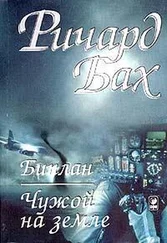Ричард Бах - Biplane
Здесь есть возможность читать онлайн «Ричард Бах - Biplane» весь текст электронной книги совершенно бесплатно (целиком полную версию без сокращений). В некоторых случаях можно слушать аудио, скачать через торрент в формате fb2 и присутствует краткое содержание. Город: New York, Год выпуска: 2012, ISBN: 2012, Издательство: Scribner, Жанр: Современная проза, на английском языке. Описание произведения, (предисловие) а так же отзывы посетителей доступны на портале библиотеки ЛибКат.
- Название:Biplane
- Автор:
- Издательство:Scribner
- Жанр:
- Год:2012
- Город:New York
- ISBN:978-1-4516-9744-5
- Рейтинг книги:3 / 5. Голосов: 1
-
Избранное:Добавить в избранное
- Отзывы:
-
Ваша оценка:
- 60
- 1
- 2
- 3
- 4
- 5
Biplane: краткое содержание, описание и аннотация
Предлагаем к чтению аннотацию, описание, краткое содержание или предисловие (зависит от того, что написал сам автор книги «Biplane»). Если вы не нашли необходимую информацию о книге — напишите в комментариях, мы постараемся отыскать её.
Biplane — читать онлайн бесплатно полную книгу (весь текст) целиком
Ниже представлен текст книги, разбитый по страницам. Система сохранения места последней прочитанной страницы, позволяет с удобством читать онлайн бесплатно книгу «Biplane», без необходимости каждый раз заново искать на чём Вы остановились. Поставьте закладку, и сможете в любой момент перейти на страницу, на которой закончили чтение.
Интервал:
Закладка:
Throttle forward, a cloud of early dust, and we are airborne once again. Splashing green fountains of spring trees roll below as we settle into cruising flight, to share the joy of other machines and other people who are only happy when they are moving.
The hand on the control stick, testing elevators and rudder, the fingers on the magneto switch, the voice, “Contact!,” each a part of one who seeks horizons lost a thousand years ago. “This time,” the thought. “Maybe this time.” The search, always the search. On a routine trip, over lands crossed daily on Flight 388, from the crowded flight deck of a jet airliner and from the cockpit of a sport airplane, the eyes of the wanderer look down, seeking the hidden; Elysium overlooked, the happy valley undiscovered. Now and again, the wanderer stiffens quickly in his cockpit, points down for the co-pilot to see, banks a wing for a clearer view. But the grass is never quite green enough; those are weeds at the water’s edge, a strip of barren ground between the meadow and the river. Every once in a while the ideal is mirrored in the sky. Every once in a while there is a moment’s perfection: the cloud, hard and brilliant against a hard and brilliant sky. Wind and cloud and sky; common denominators in perfection, eternals. The ground you can change. Rip out the grass, level the hill, pour a city over it all. But rip out the wind? Bury a cloud in concrete? Twist the sky to the image in one man’s mind? Never.
We search for one goal and find another. We search the visible, holding the polished memory of perfection that was, and in the tens and hundreds and thousands of hours that we drift through the sky we discover a much different perfection. We journey toward a land of joy, and in our search we find the way that other, earlier pilots have scouted before us. They spoke of solitude in the high places, and we find the solitude. They spoke of storms; the storms are there, glowering still. They spoke of high sun and dark skies and stars clearer than ground ever saw; all of them remain.
If I could talk now to a barnstormer or read his words on the yellowed pages of 1929, he would tell me of flying the south, on the route from Columbia, South Carolina, to Augusta, Georgia. It’s the easiest thing in the world to follow a railroad, but out of Columbia there’s such a twist and tangle of railroad it takes a good eye to sort the tracks that lead to Augusta from the ones that lead to Chattahoochee, to Mirabel, to Oak Hollow. Follow the wrong one, he would say, and you find yourself off in the middle of nowhere, and not much of an idea how to get back.
And it’s true. Look at the mass of railroads down there! Maybe there’s an air molecule or two around that remembers the flash of his propeller, that might chuckle at my concern, coming along so much later, over precisely the same problem that caused his concern before me. We both must find our way out of the maze, and find it by ourselves. I don’t know what he did, but I look ahead to pick the sharp arrowhead of a lake on course, and fly to that and pick the railroad then, when there is clearly only one choice to make. Perhaps he had a better way. I wish he were around still; I wish that I could look out and see his Jenny or his J-1 Standard smoothing along above the twin rails. But this morning I continue alone, or at least as far as my eyes can see, alone. The history and the tradition and the old molecules are here about me every second. The barnstorming pilots said that the sky was cold and that they froze in their cockpits. I know now that they kept warm for some time by simply not believing that it could possibly be so cold over the south, where, after all, people come to flee the ice of northern winters. But at last there is no fighting left to be done; the lesson is learned. It gets terribly cold; hard, ice-freezing cold over South Carolina in the morning of a spring day. I used to smile when I heard of the early pilots huddling forward under what little shelter they could get from the windscreen, and shuffling their feet quickly back and forth in odd strange movements just for the sake of moving and keeping the cold at bay.
I am not smiling now. Instead I discover a technique on my own, over South Carolina. I won’t be so brash as to think that it hasn’t been discovered scores of times before, in the same air, in fact, by scores of early pilots. There is a huge imaginary crank on a shaft thrust through the center of the instrument panel. Turn it. Turn it faster and faster with the right glove, reverse it and turn it faster still with the left glove. If you turn that crank long enough and fast enough, it just barely keeps you from going numb and blue in the cold. And it makes you so tired you can hardly muster strength to look over the icy side and down to check where the winds are drifting you now.
The sun in South Carolina is timed to begin to warm the air precisely one second before the frost-covered pilot decides to call a halt to all this nonsense and land and start a gasoline fire to warm himself. Fleece-lined leather jacket, woolen flight suits and shirts and rabbit-fur gloves don’t make a bit of difference. The only thing that steps in at that last second is the sun, throwing a billion BTU’s into the earth, and gradually, very gradually, beginning to warm the air. Old pilots, wherever you are now, I can report that the mornings of the South Carolina spring are exactly as you left them.
Always they looked for places to land should the engine suddenly stop, and always do I. That is one of the old habits that has disappeared. The odds against a modern engine failing during any one flight are astronomical. The odds against it failing during any one moment of any one flight, while the pilot happens to be considering a place to land, is out of the realm of ordinary mathematics. So, beyond a bit of lip service, forced landings in modern airplanes are no longer practiced. Why bother, if an engine will never fail? Spins and spin recoveries have not been taught for years. We have horns and lights that warn against the conditions under which an unknowing pilot can manhandle an airplane into a spin. And if an airplane will never be spun, why bother to teach spin recoveries? Why bother to teach aerobatics? The chance that a pilot could save his life by knowing how to control an airplane when it is in a vertical bank or when it has been tossed upside down are rather remote, because unless one flies into extreme turbulence or crosses the wake of a jet transport, the chances are remote that the airplane will ever know more than a shallow bank. Besides, most modern airplanes are not licensed for aerobatics.
Gone the old skills. Don’t listen to the wind to tell your airspeed, watch the airspeed indicator and hope that it is correct. Don’t look over the side to gage your altitude, trust the altimeter, and don’t forget to set it properly before each flight. Make the proper numbers appear in the proper dials at the proper time, and you have a first-class automobile with wings.
But no need for bitterness, for when I say gone the old skills, I don’t speak true. The old skills and the old days are there for those who would seek them out.
* * *
One hour, the end of the railroad track, and the town of Augusta. Lower into the warming air, and left-rudder-left-stick in a wide sweeping turn about the airport. There the windsock, saying the winds are almost calm this morning. There a pattern of runways, which I disregard, and rows of grass between, to which I pay very close attention. There the red fuel pumps, with no customer so early in the morning.
No customers in the sky this morning, either. I am alone. A little more aileron, to bank the wings up vertically and drop quickly toward the grass. Grass isn’t often landed upon at airports, and one must be careful to look at it closely for traces of rabbit holes hidden and gullies crossing. The biplane skims the grasstops and there is not far down to look to see the ground. It looks good for landing.
Читать дальшеИнтервал:
Закладка:
Похожие книги на «Biplane»
Представляем Вашему вниманию похожие книги на «Biplane» списком для выбора. Мы отобрали схожую по названию и смыслу литературу в надежде предоставить читателям больше вариантов отыскать новые, интересные, ещё непрочитанные произведения.
Обсуждение, отзывы о книге «Biplane» и просто собственные мнения читателей. Оставьте ваши комментарии, напишите, что Вы думаете о произведении, его смысле или главных героях. Укажите что конкретно понравилось, а что нет, и почему Вы так считаете.





